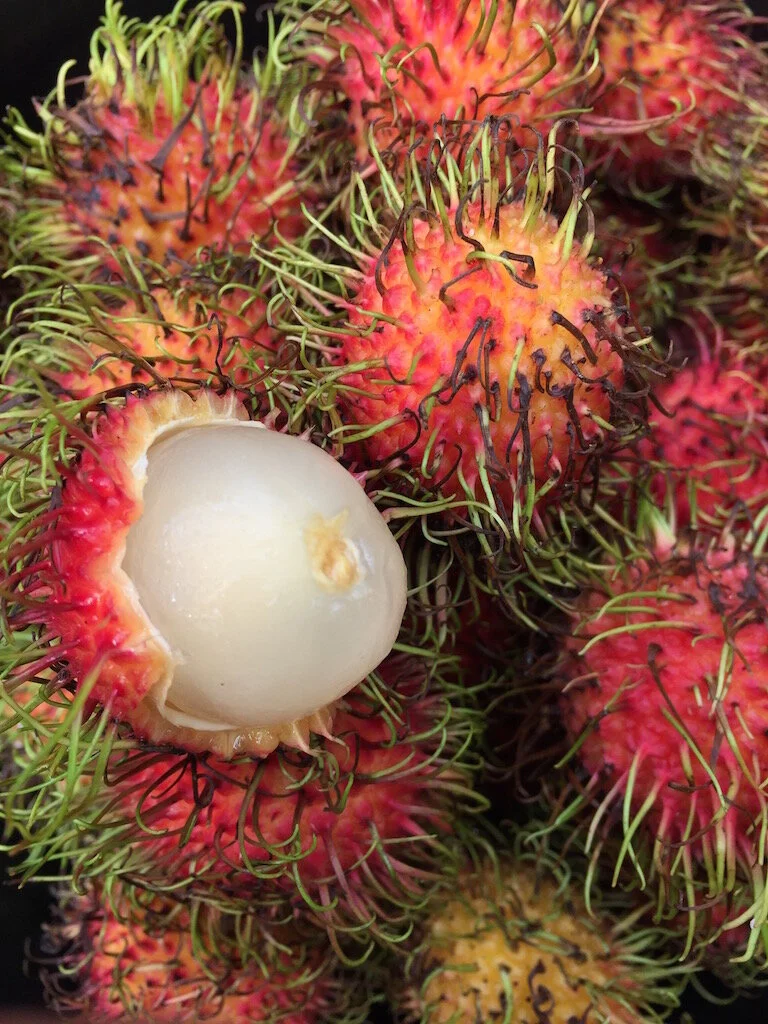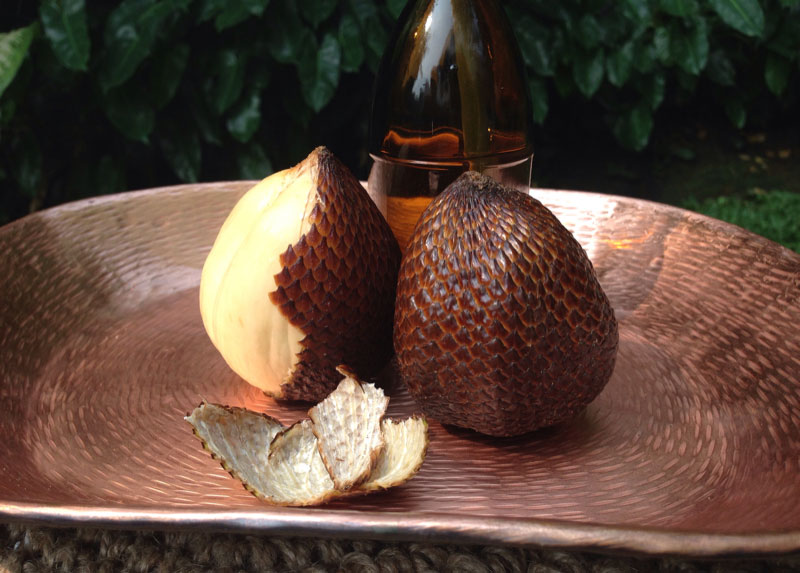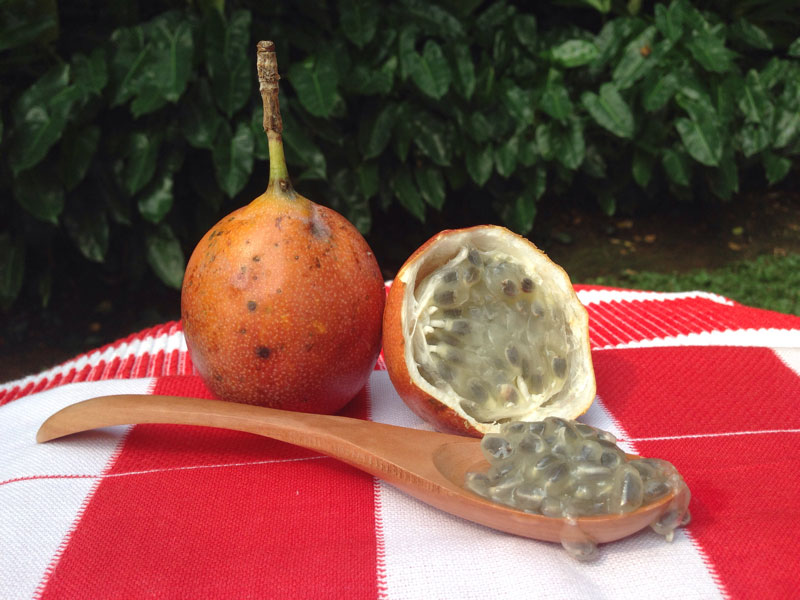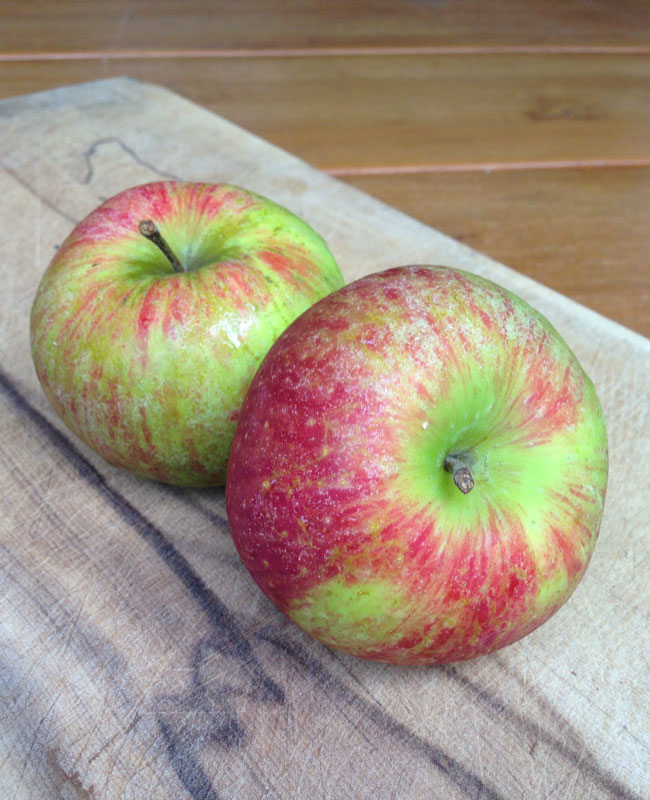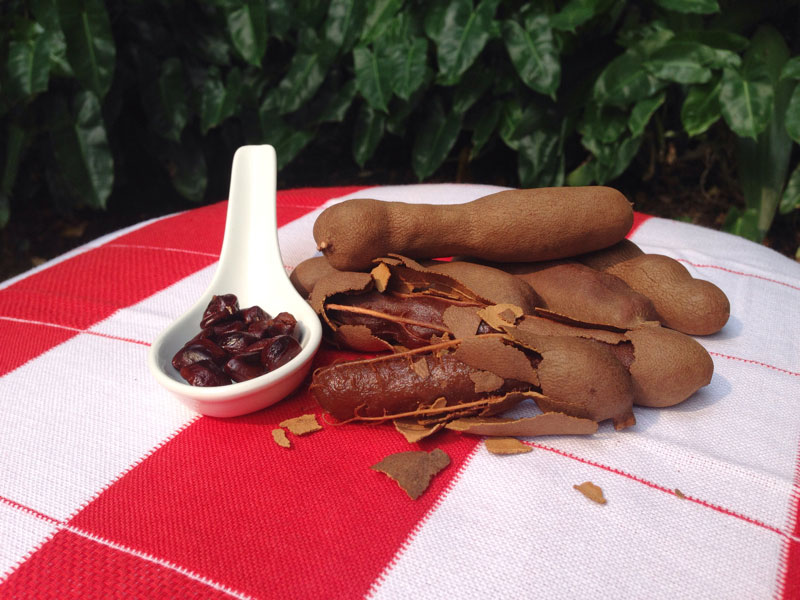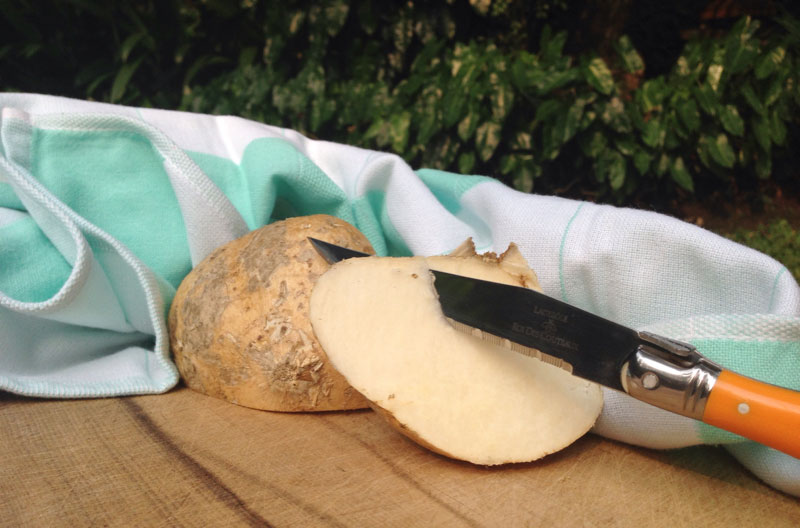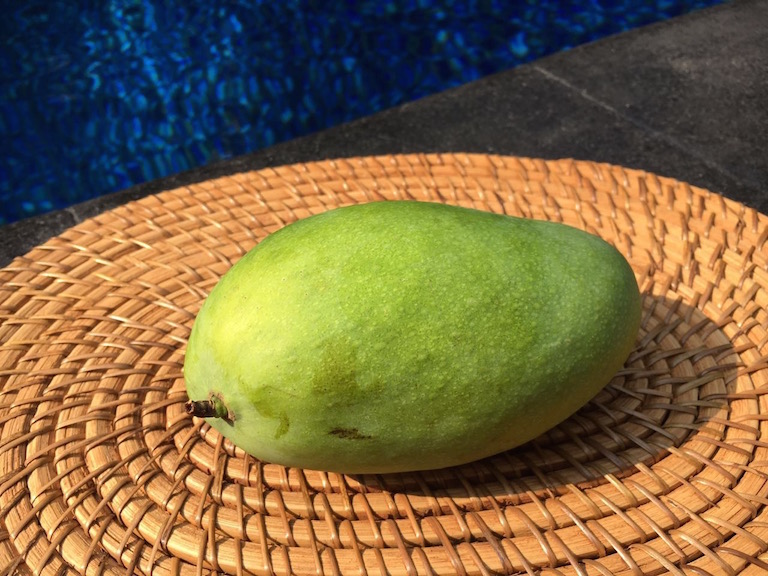Tropical Fruits of Indonesia
Tropical fruit selection
The original version of the following post was first published in January 2015 - approximately one year after my family arrived in Jakarta. Since compiling that post, we have continued to sample (and thoroughly enjoy) many new local fruits and hence an updated and extended version of Tropical Fruits of Indonesia was required (see below).
We hope you find the following information useful and as always, we love to receive your feedback in our Comments section.
I’ll be honest with you, when we first arrived in Jakarta I was almost relieved to see so many familiar varieties of fruit and vegetables, so familiar in fact that a lot of the produce had been imported from my home country (as well as New Zealand, USA and France). Just the sight of apples that I would once find unexciting in my local supermarket suddenly gave me a sense of comfort - nostalgia rears its head at the most unusual times. But I am happy to report that I have made good progress since these early days.
Although our family still enjoys an imported apple be it a Fuji, Gala or Granny Smith, we have now discovered a variety of apple grown here in Java itself – the Malang. It is crunchier than any imported apple that you will eat and you can rest assured that due to the fewer kilometres it has traveled, it's also more nutritious and has had less impact on the environment, simply getting to you.
Familiar produce at a local supermarket in Jakarta
Back in Melbourne, Australia, I always loved to linger in the fruit and veggie section at the supermarket and this is definitely still the case at my local supermarket in Jakarta. I enjoy picking up unfamiliar fruits and vegetables and using my emerging Bahasa Indonesia, I query the vendors on how best to use the produce in hand. After compiling this story, my family and I had a feast eating all the fruits (and the one vegetable and one legume that I thought were fruits!) When in season mangosteen, dragonfruit, bengkuang, papaya, markisa and malang apples always feature in our fruit bowl (along with local bananas, pineapples and of course, mangoes).
So let us introduce you to our selection of tropical fruits that you must try (but don’t be limited - there’s plenty more for you to sample!)
Mangosteen (Manggis)
Manggis fruit are from an evergreen tree, which is believed to have originated from the Moluccas and Sunda Islands of Indonesia. Manggis are super-sweet and juicy.
Serving suggestion: Eat fresh, add to fruit salad or cold drinks.
Mangosteen (Manggis)
Snake fruit (Salak)
Salak fruit are from a plant related to the palm family. They grow in clusters just above the base of the plant and are native to Java and Sumatra.
Salak are often mildly sweet, crunchy and can be quite dry. They have been compared to a chestnut in flavour and texture.
Serving suggestion: Eat as a whole piece of fruit or add to drinks such as our Salak spiced drink.
Snake fruit (Salak)
Dukuh (Lansa in East Indonesia)
Dukuh fruit grow in clusters on a medium-sized tree and are related to the rambutan.
They are sweet and have a rubbery texture. Each individual fruit is made up of segmented pieces.
Serving suggestion: Eat as individual fruits, stew and bottle in syrup, add to cool drinks.
Note: Excess consumption of Dukuh can result in a sore throat.
Dukuh
Rose apple (Jambu Air)
Jambu air can be found growing on small-medium sized trees, often seen in the streetscapes of neighbourhoods in Jakarta.
They have a crunchy texture and can be almost tasteless although the white variety is often the sweetest fruit.
Serving suggestion: Jambu air is used in a local salad known as Rujak and is often enjoyed with a sprinkle of lime juice and salt.
Rose apple (Jambu air)
Sirsak (Soursop, Sugar Apple Java)
Sirsak fruit come from a small tree and grow throughout South East Asia.
Sirsak are often considered to be sour in taste but may also develop a mildly sweet flavour. A ripe sirsak is very soft, fleshy and may have a juicy texture. The seeds are known to be poisonous.
Serving suggestion: Blend with crushed ice as a refreshing granita-style drink, add to juices, can also be used in ice cream.
Soursop (Sirsak)
Passionfruit (Markisa)
Passionfruit are native to South America and are cultivated in tropical and subtropical areas. Two varieties are available in Java (white and yellow markisa). They have a sweet and juicy pulp with crunchy seeds.
Serving suggestion: Eat them on their own, add to cake icing, to drinks, fruit salads etc.
Passionfruit (Markisa)
Malang apples (Apel Malang)
Malang apples are grown in East Java, due to the cooler climate in that particular region. It has a crunchy texture and is not particularly sweet. The Malang apple is comparable with more tart apple varieties such as Gravenstein and Cox Orange Pippin.
Serving suggestion: The Malang apple is suited to savoury dishes and cheese platters (or just munching on as a good one is superb!)
Malang apple
Tamarind (Asam Java)
The tamarind pod comes from a leguminous medium-sized tree indigenous to tropical Africa but now grown widely throughout the tropical belt including South Asia, Northern Australia, Southeast Asia, China and Taiwan.
Serving suggestion: Asam Java have a fleshy sweet pulp inside mature pods which is used in desserts, can be added to juices or to sweeten drinks. It is regularly found in 'Jamu'. It can also be used in ice cream and a variety of other sweets. The flesh of the immature pods is very sour and is used in condiments for savoury dishes. The seeds can be roasted and eaten as a snack.
Tamarind (Asam Java)
Bengkuang (Jicama, Yam bean, Mexican turnip)
The Bengkuang is a root vegetable that has a crunchy texture. It can be quite bland or mildly sweet in flavour and has a high water content.
Serving suggestion: Add to salads (especially coleslaw), include in the filling of lumpia (Indonesian spring rolls) and add to stirfries (similar to water chestnuts).
Jicama (Bengkuang)
Dragonfruit (Buah naga)
Dragonfruit is the fruit of various cactus species which are indigenous to both North and South America. These fruit are called ‘dragonfruit’ reflecting their name in many Asian countries eg: In Indonesia, dragonfruit are called ‘buah naga’ where ‘naga’ means dragon and ‘buah’ is the Bahasa Indonesia word for fruit.
Dragonfruit (Buah Naga) are beautiful fruit to eat and also to look at
Serving suggestion: Dragonfruit are best eaten fresh. They tend to be mildly sweet in taste - a surprising contrast to their vibrant appearance. In general, the red dragonfruit tend to be sweeter. The white dragonfruit can often be quite bland.
The red Dragonfruit tend to be sweeter and more flavoursome than the white variety
Rambutan
Rambutan are native to South East Asia, in particular Malay-Indonesian region. They are closely related to the lychee and longan. The word ‘rambut’ means hair in Bahasa Indonesia, hence the name, ‘rambutan’ due to the fruits’ hairy outer skin.
Serving suggestion: Eat freshly picked from the tree.
Rambutan are a very popular snack
Rambutan are often covered in little black ants so remember to give them a good shake outside before bringing them indoors.
During Rambutan season, their spiky skin can be found littering the streets
Starfruit (Belimbing)
Starfruit are also called Carambola and are native to Indonesia, Philippines, Vietnam, Malaysia, Bangladesh, India and Sri Lanka. A cross-sectional cut reveals its star shape.
Serving suggestion: The entire fruit is edible and can also be used in cooking. Some uses include: relishes, preserves, and juice drinks.
Starfruit (Belimbing) has a refreshing taste, resembling nashi fruit
Mango (Mangga)
Records of Indonesian mangoes date back many centuries. Originally from India, the mango is cultivated all over the world in tropical and semi-tropical countries. Due to drier weather, most Indonesian mangoes are grown in Central and East Java.
Mangga Harum Manis - one of the many varieties of mangoes available in Indonesia
Serving suggestion: The ripe mango is consumed as a fresh fruit. More stringy varieties of mangoes are excellent for juice or jam. Sun dried mango is also very popular in Indonesia. Very young fruit is used as a vegetable - either cooked or raw. Indonesian’s love the dish, rujak, in which not only young mango is used, but most young, unripe fruit including kedongdong (ambarella), belimbing (starfruit), carambola, rose apple (jambu air) and many others. The young fruit is sliced into bit-sized pieces and eaten raw with a sauce consisting of kecap manis, palm sugar and sambal.
There are many varieties of mangoes available throughout the year. These are for sale at a local supermarket in South Jakarta
Pawpaw (Papaya)
The papaya is native to central and northern South America but can be found growing in many countries; some including India, Australia, Malaysia, Philippines and Indonesia.
Papaya (Pawpaw)
Serving suggestion: The ripe fruit of the papaya is most commonly peeled, seeds removed and usually eaten raw.The unripe green fruit can be eaten cooked. It can be added to curries and stwes. Both raw and cooked green papaya is used in Southeast Asian cuisine. In Indonesia, unripe green papaya and its young leaves are boiled for use as part of the sundanese lalab salad, while the flower buds are sautéed and and flashfried with chillies and green tomatoes to create a Manadonese-style papaya flower vegetable dish.
The stunning inside of a Papaya
Avocado (Alpukat)
Avocado fruit is in fact the large berry of the avocado tree. Native to south central Mexico but grown in many other countries, (in general) the Indonesian-grown avocado is less creamy and has less flavour than the variety found in Australia, for example.
Serving suggestion: In Indonesia, avocados are frequently used in milkshakes and can be found as a flavour of ice-cream and other desserts.
Locally grown Alpukat (Avocado)
Pineapple (Nanas)
Pineapples were first discovered in the Americas by European explorers who declared that the fruit resembled pine cones and hence called them "pineapples". Pineapples are available year-round in Jakarta. The pineapple variety here is called the ‘Nanas Palembang’ and as the name suggests is grown in the area around Palembang - the second largest city in Sumatra and capital of South Sumatra. For this variety of Indonesian pineapple, the bumper harvest times are during the months of December, January and July.
Serving suggestion: Eat it fresh (prepared like an expert using our DIY peeling technique), add fresh pineapple to juice, or to your own Indonesian spicy fruit salad - ‘Rujak’, or use it as the delicious star ingredient in our Upside down Pineapple cake (recipes at end of this post).
'Nanas Palembang' grown on the island of Sumatra
Guava (Jambu biji)
Guava originated in Central America and were adopted as a crop in subtropical and tropical Asia.
Serving suggestion: Guavas contain a high level of pectin (a natural thickener) and can be used in preserves, jams and marmalades. In Indonesia, guavas are mostly eaten fresh or made into juice, sliced and added in rujak manis (fruit salad with spicy peanut dressing).
Guava (Jambu biji) are a popular fruit in Indonesia
Longan (Lengkeng)
Longans are the edible fruit from the family of tropical trees known as soapberry. Lychees also belong to this family as do rambutans. Longan are native to Southern Asia. When fully ripened, the freshly harvested longans have a shell that is bark-like, thin, and firm, making the fruit easy to shell by squeezing the fruit out from within.
Unlike juicy lychees, longans have a drier sweetness. The seed and the shell of the longan cannot be consumed.
Lengkeng (Longan fruit) are related to the lychee
Serving suggestion: Longans are sweet, juicy and succulent. They are most frequently eaten fresh, but can also be added to Asian soups, desserts and sweet-and-sour foods.
The skins of the Longan fruit are very thin and easy to remove
Kedondong (Ambarella)
Kedondong are a tropical fruit that contain a fibrous pit. The fruit tends to reach a size of 6 - 9cm and fall to the ground before ripening. After this, they turn golden-yellow as they ripen.
Serving suggestion: In Western Java, the young leaves of the kedondong are used as seasoning for dishes wrapped in banana leaf (known as ‘pepes’). Eaten raw, kedondong are crunchy and quite sour. The flavour of the kedongong has been described as a pineapple-mango flavour.
Ambarella (Kedondong) are an ingredient found in ‘Asinan Buah’
Kedondong is an ingredient in rujak in Indonesia and Malaysia (‘rojak’). Kedondong can be used to make preserves and flavourings for sauces, soups, and stews.
Durian
In Southeast Asia, many people consider the durian to be the "King of fruits”. It has a distinctive size and shape (‘duri’ means spike in Bahasa Indonesia) and a very strong odour. The durian is native to Southeast Asia but has only been known to the Western world for about 600 years. The nineteenth-century British naturalist Alfred Russel Wallace described the flesh of the durian as, ”a rich custard highly flavoured with almonds".
Durians at the local supermarket - you will smell them before you see them!
Other fruits to try: Jeruk Bali (Indonesian pomelo), Jeruk nipis (Indonesian key limes), kelapa (coconut varieties), yellow watermelon, lychees, bananas (various varieties including plantain bananas), chillies (yes, they're a fruit!), sawo, jackfruit, cempedak, sukun (bread fruit) and.... What else? Perhaps you can add to our list in the Comments section below!
Here are some of our 'ajb' recipes that use Indonesian-grown fresh produce. Why not give them a try and let us know what you think. Just click on the links below:
How to make our delicious pulled Jackfruit tacos (with taco recipe included)
Simple Banana Ice-cream and Local Citrus Granita-style Sorbet
Tropical Coconut Salad
Individual Malang Apple Crumbles
Javanese-style Rujak
Upside down Pineapple Cake
Words: Jo Stevens Photography: a journey bespoke


